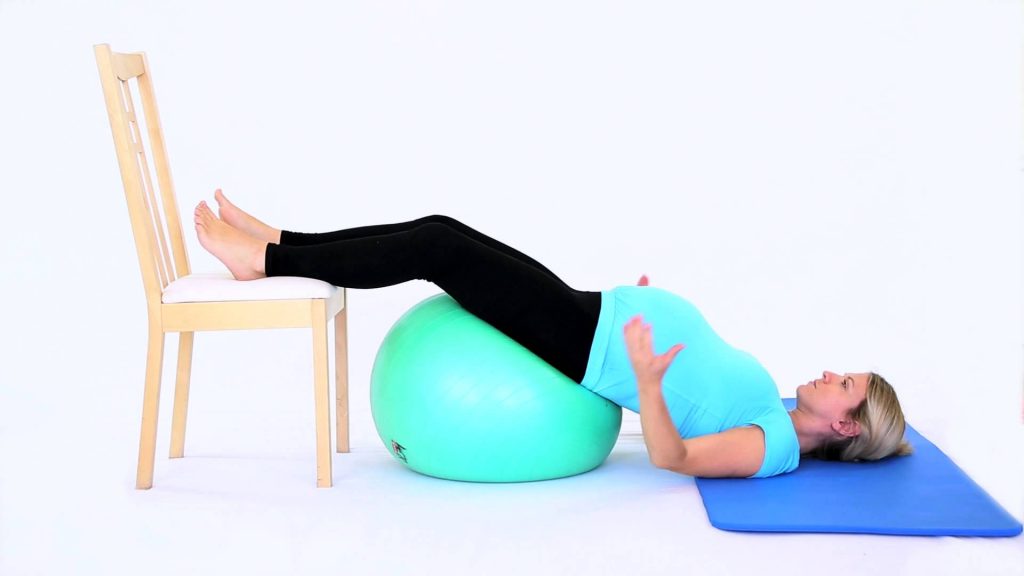About 3-4 percent of all the total pregnancies usually result in the baby being breech. A breech pregnancy occurs when the baby (or babies!) is positioned head-up in the woman’s uterus, so the feet are pointed toward the birth canal. A breech pregnancy presents a few different challenges for both mother and baby.
Here’s a breakdown of the most common techniques for turning a breech baby.
Read More: 11 Ways to Turn a Breech Baby
9 Must Know Ways to Turn a Breech Baby
ECV
This intimidate acronym stands for external cephalic version, and it’s an intervention performed at a hospital and clinic under ultrasound guidance. Herein the doctor would use hands to try and position the baby. This is done by carefully pushing on the abdomen. ECV when performed between 35-38 weeks usually gives best results, if after nothing else has worked. The baby’s vital signs are cautiously monitored before and after the procedure. According to a medical literature, ECV has about a 40 to 70 per cent success rate. The procedure takes just a few minutes, but it is known to be very uncomfortable for women. No doubt it’s painful but probably better than the pain of recovering from C-section.
Forward-leaning inversion
These are postures that are highly recommended to all pregnant women for proper fetal positioning as the due date approaches even when you’re carrying a breech baby or not. Just for 10 to 15 minutes every day before retiring to the bed, or while watching TV, rest in a child’s pose or rock back and forth on your hands and knees, only if you’re comfortable with it. This will help to relax your pelvic muscles and there would be gravitational pull inside your uterus. You can also try out some gentle pelvic rotations—swirl your hips like trying to belly-dance this will encourage the baby to move around.
Read More: Third Trimester Ultrasound Scans: Everything You Need To Know
Acupuncture and moxibustion
Moxibustion is one form of a Chinese medicinal technique and acupuncture. Although here instead of acupuncture needles, the practitioner applies gentle and tolerable amount of heat in the form of a mugwort stick which looks a lot like cigar. One end of it is lit, and the other end gently applied to a pressure point on the woman’s baby toe. The meta-analysis of acupuncture and moxibustion shows no adverse effects, but these techniques aren’t proven to be helpful, either.
Pelvic tilt (aka the ironing-board technique)
The breech tilt, also known as pelvic tilt, essentially means lying on the floor and raising your hips with your feet planted on the ground and your knees bent. Or, some women position an ironing board so that one end is on the edge of a couch and the other end is on the floor creating a sloping bridge. Lie on the ironing board with your head resting on a pillow and your feet elevated for a 20-minute period. (How you get your pregnant self onto, and off, this ironing board is definitely not going to be graceful. Ask for help.) “Other than the risk of a headache—and one of my patients busting an ironing board while she was lying on it—there are no adverse effects of this method,” Giesbrecht laughs.
Swimming
Swimming, may not have fully proven for results of turning breech babies, but it is definitely quite relaxing for women. It’s has great therapeutic values for tired joints and achy muscles in later stages of pregnancy anyway, and is harmless to the baby.
Read More: Third Trimester Ultrasound Scans: Everything You Need To Know
Music
Heard any old mid-wives’ tales about playing music on your belly? The theory behind it is that when musical tunes are directed toward the base of your bump, it might persuade the baby whose head is towards the ribs to turn it head-down (also known as vertex) position, closer to the birth canal. There is no medical evidence to support this method either.
Visit a chiropractor
Chiropractic is primarily used as a pain relief. It is sometimes used along with conventional medical treatment.Many chiropractors are trained in special Webster Technique which involves gentle adjustments to release the tension in the pelvis and allow your baby to flip.
Essential oil
Some mothers claim to have had success using an essential oil like peppermint on their stomachs to stimulate the baby to turn on its own. As always, however, check with your doctor before using essential oils as some are not safe for pregnant women.
Inversion
Another popular method for women with breech babies is inverting their bodies to encourage the baby to flip. Women use different methods, like standing on their hands in a swimming pool, propping up their hips with pillows, or even using the stairs to help elevate their pelvis.
